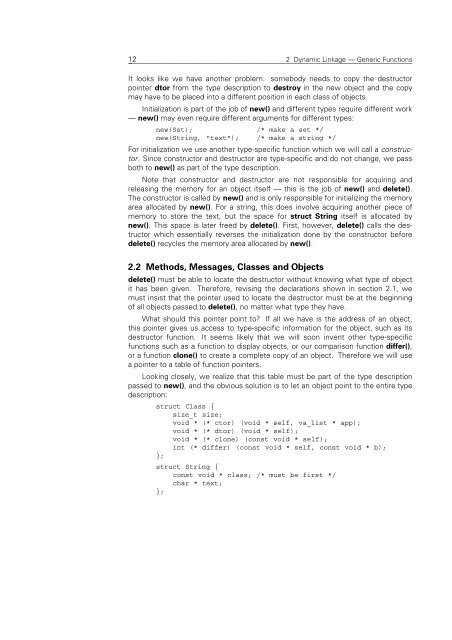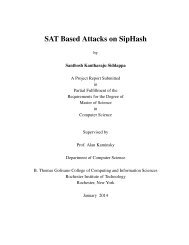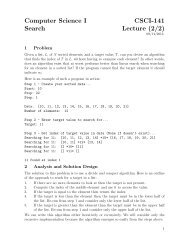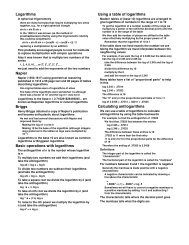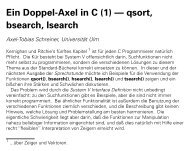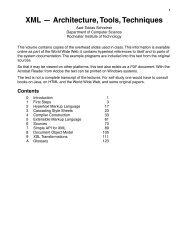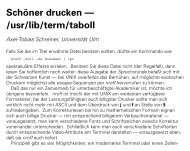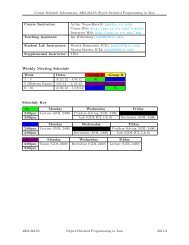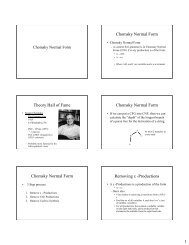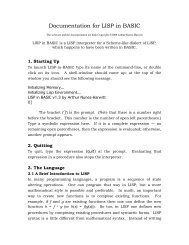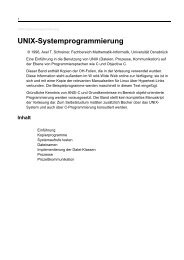Object-Oriented Programming With ANSI-C (pdf)
Object-Oriented Programming With ANSI-C (pdf)
Object-Oriented Programming With ANSI-C (pdf)
Create successful ePaper yourself
Turn your PDF publications into a flip-book with our unique Google optimized e-Paper software.
12 __________________________________________________________________________<br />
2 Dynamic Linkage — Generic Functions<br />
It looks like we have another problem: somebody needs to copy the destructor<br />
pointer dtor from the type description to destroy in the new object and the copy<br />
may have to be placed into a different position in each class of objects.<br />
Initialization is part of the job of new() and different types require different work<br />
— new() may even require different arguments for different types:<br />
new(Set); /* make a set */<br />
new(String, "text"); /* make a string */<br />
For initialization we use another type-specific function which we will call a constructor.<br />
Since constructor and destructor are type-specific and do not change, we pass<br />
both to new() as part of the type description.<br />
Note that constructor and destructor are not responsible for acquiring and<br />
releasing the memory for an object itself — this is the job of new() and delete().<br />
The constructor is called by new() and is only responsible for initializing the memory<br />
area allocated by new(). For a string, this does involve acquiring another piece of<br />
memory to store the text, but the space for struct String itself is allocated by<br />
new(). This space is later freed by delete(). First, however, delete() calls the destructor<br />
which essentially reverses the initialization done by the constructor before<br />
delete() recycles the memory area allocated by new().<br />
2.2 Methods, Messages, Classes and <strong>Object</strong>s<br />
delete() must be able to locate the destructor without knowing what type of object<br />
it has been given. Therefore, revising the declarations shown in section 2.1, we<br />
must insist that the pointer used to locate the destructor must be at the beginning<br />
of all objects passed to delete(), no matter what type they have.<br />
What should this pointer point to? If all we have is the address of an object,<br />
this pointer gives us access to type-specific information for the object, such as its<br />
destructor function. It seems likely that we will soon invent other type-specific<br />
functions such as a function to display objects, or our comparison function differ(),<br />
or a function clone() to create a complete copy of an object. Therefore we will use<br />
a pointer to a table of function pointers.<br />
Looking closely, we realize that this table must be part of the type description<br />
passed to new(), and the obvious solution is to let an object point to the entire type<br />
description:<br />
struct Class {<br />
size_t size;<br />
void * (* ctor) (void * self, va_list * app);<br />
void * (* dtor) (void * self);<br />
void * (* clone) (const void * self);<br />
int (* differ) (const void * self, const void * b);<br />
};<br />
struct String {<br />
const void * class; /* must be first */<br />
char * text;<br />
};


